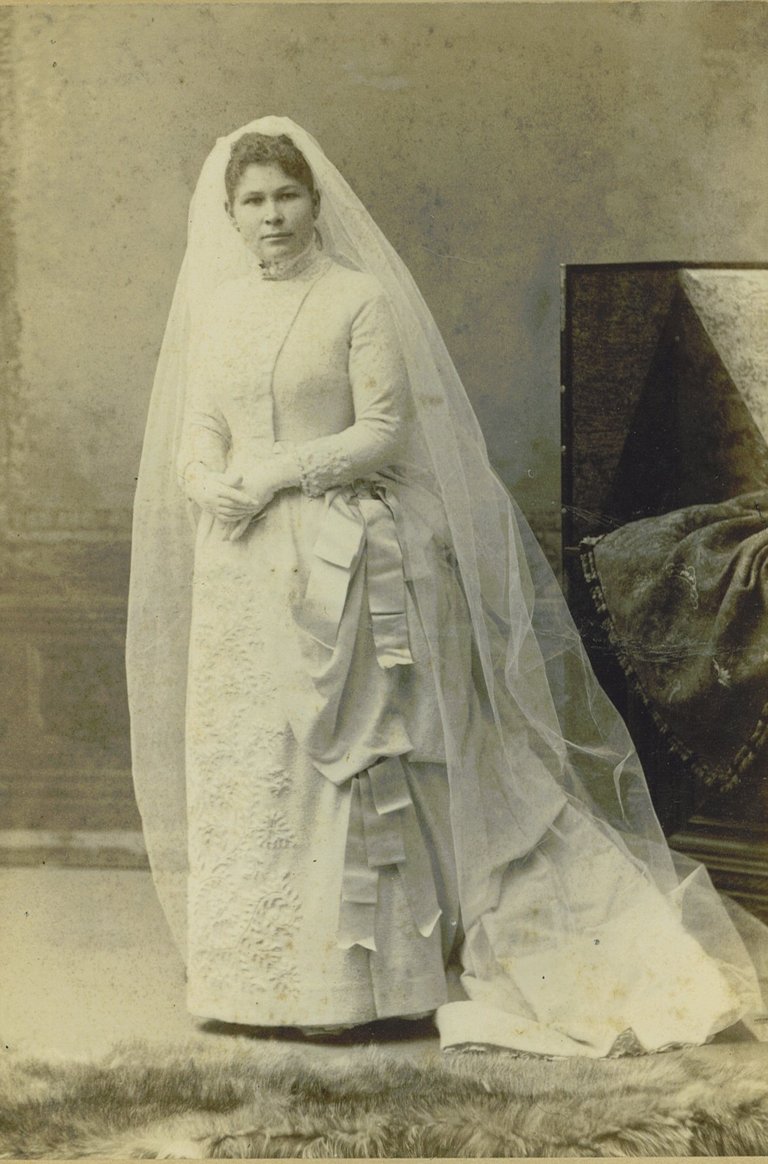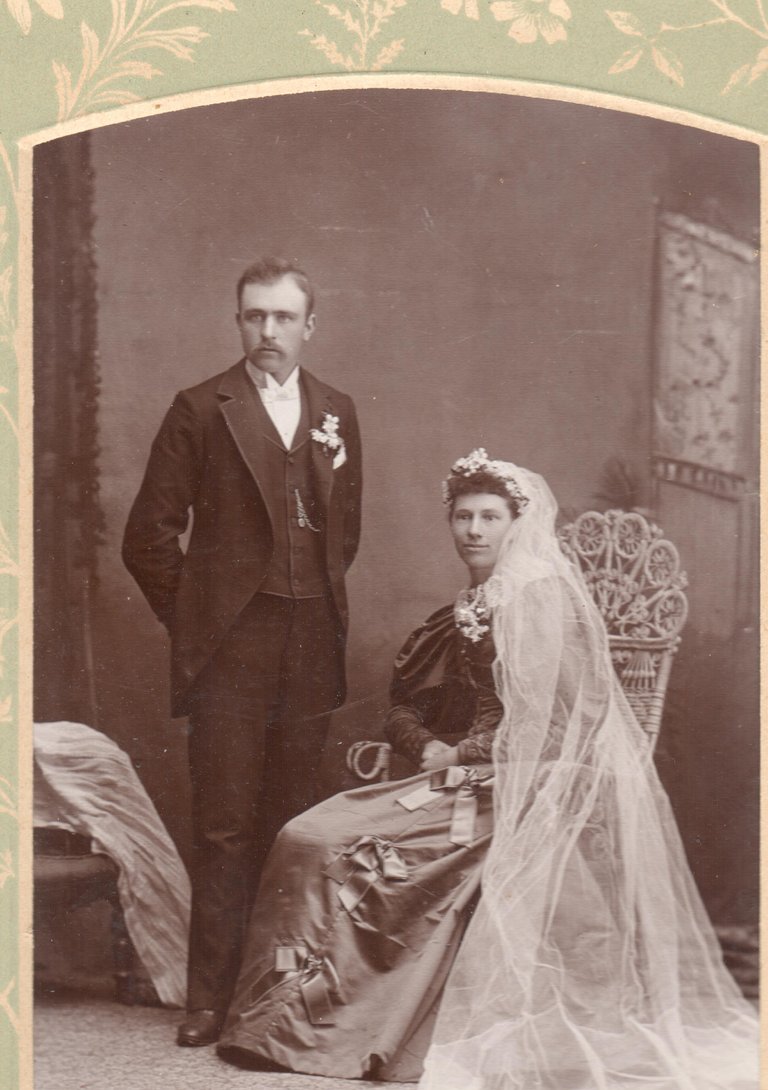This morning I’m cooking down some tomatoes, so I have a few minutes to post something interesting.

We normally associate June with weddings, and we’re already well into July, but here are two neat things.
The first is a recipe from Practical Housekeeping: A Careful Compilation of Tried and Approved Recipes. Minneapolis: Buckeye Publishing Company, 1884. This book was a revised edition of Buckeye Cookery and Practical Housekeeping, Buckeye Publishing Company, 1881. The citation out of the way, take a look at this recipe:
Wedding Cake
50 eggs
5 lb. sugar
5 lb. flour
5 lb. butter
15 lb. raisins
3 lb. citron
10 lb. currants
1 pt. brandy
¼ oz. cloves
1 oz. cinnamon
4 oz. mace
4 oz. nutmeg
This makes 43 and a ½ pounds and keeps twenty years. This cake is unequaled. Mrs. C.H.D. Northampton, Mass.
(pg. 79)
Now THAT is a cake! 19th century “wedding cakes” in the U.S. tended to be rich fruit cakes like this. Often the bride and bridesmaids would cut the cake into tiny pieces and pass each piece through the wedding ring. Then these pieces would be given to unmarried guests and friend because, as superstition went, if an unmarried person slept with a piece of the cake under her pillow, she would dream of her future husband. Obviously the couple intended on keeping part of the cake for a future anniversary (some sources also say a child’s christening).
By-the-by, sometimes the wedding featured a “bride’s cake” as well, which was a white cake.
Nineteenth century wedding dresses weren’t always exactly what we might expect, either.
Many young women simply couldn’t afford a white gown like the 1880s example above; that just wasn’t practical. Weddings also were not the commercialized events that they are today (My daughter has been watching a wedding dress program on television lately, and the prices are frankly appalling. Take that money and use it toward a down-payment on a house.) Girls often wore their best or newest dress, or a simple traveling suit.
You may have heard the rhyme that appears in many variations:
Married in yellow, ashamed of the fellow.
Married in green, ashamed to be seen.
Married in blue, you’ll always be true.
Married in black, you’ll wish yourself back.
Married in pearl, you’ll live in a whirl.
Married in brown, you’ll live out of town.
Married in white, you’ve chosen a-right.

I've studied this dress carefully, and I'm going to go with a date of late 1890s-very early 1900s on it, because it has some features of a c. 1900s pattern that I saw once, but doesn't have the full pouter pigeon blouse. I also see a few features that could be early 1890s. If you have a guess, I'd be happy to hear it.
With their best dress, however, many girls did wear the traditional symbol of a bride: orange blossoms. As these grow only in very warm climates, the flowers were usually made of wax. In the 1840s-1850s, the bride often wore a wedding bonnet, which might be decorated with these. After that, brides often wore a headdress of the orange blossoms. Sometimes the woman carried a small bouquet of them as well.

This dress is mid-1890s. Notice that cutaway (morning) coats were popular with the men.
And yes, by next time I hope to have figured out how to make the text do italics.....
I hope that you’ve enjoyed these. God bless you, and I hope that you have a good day.
Congratulations @thedogtrot! You have completed some achievement on Steemit and have been rewarded with new badge(s) :
Click on any badge to view your own Board of Honor on SteemitBoard.
For more information about SteemitBoard, click here
If you no longer want to receive notifications, reply to this comment with the word
STOP